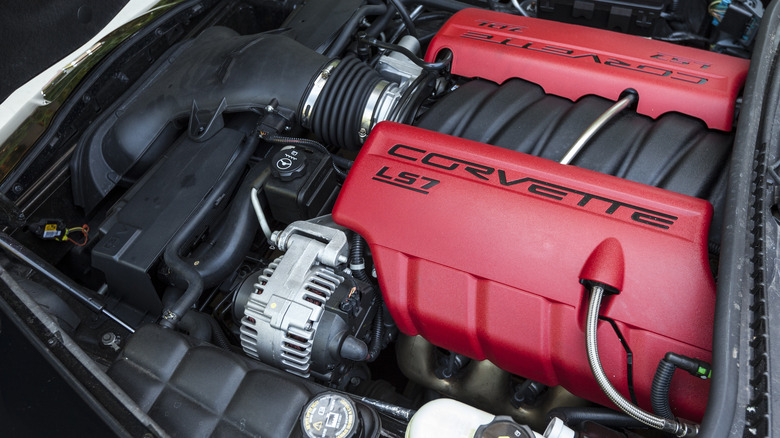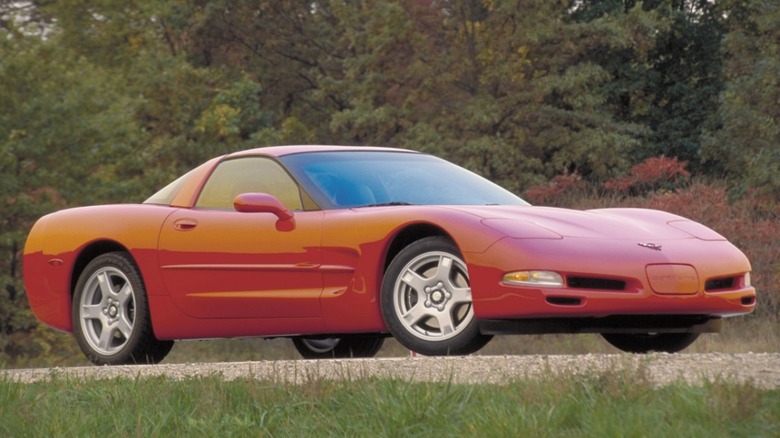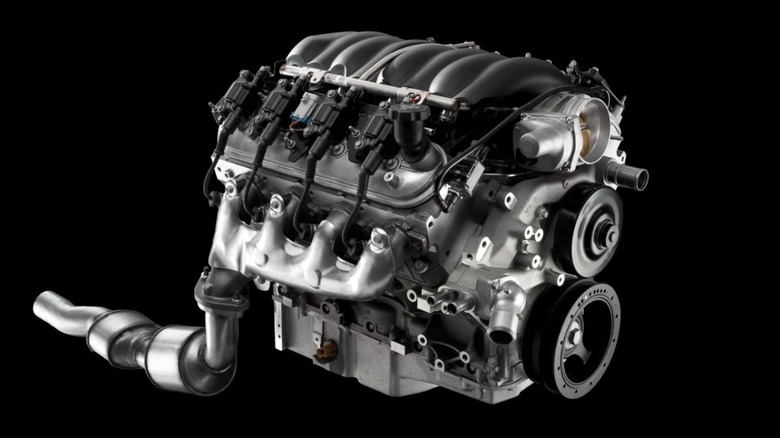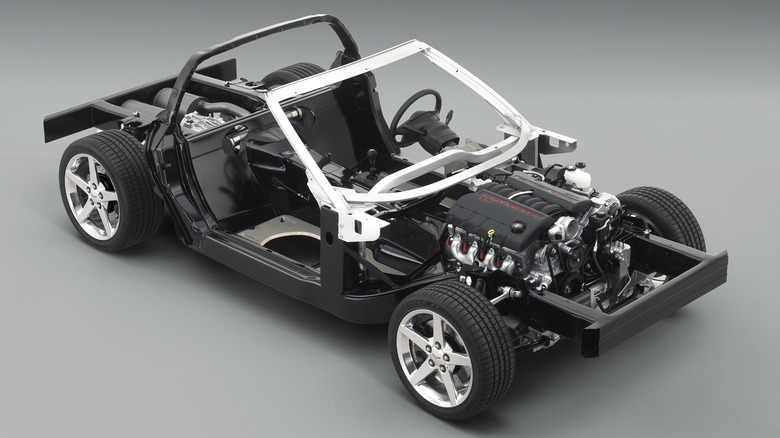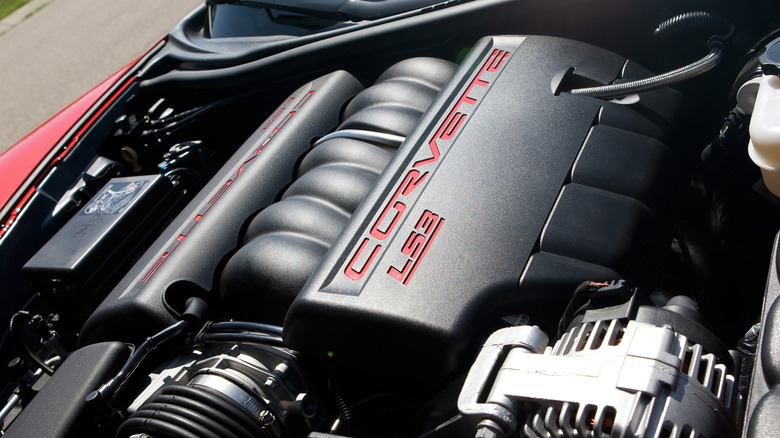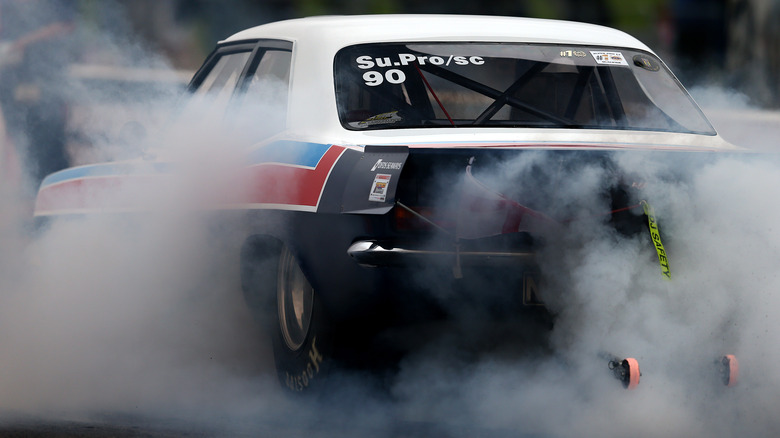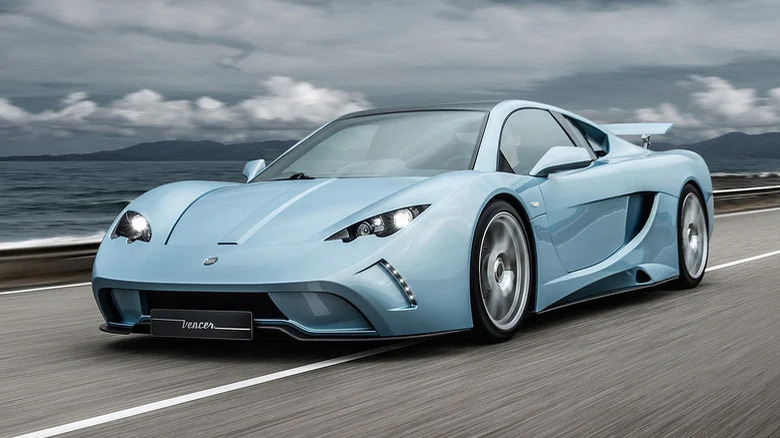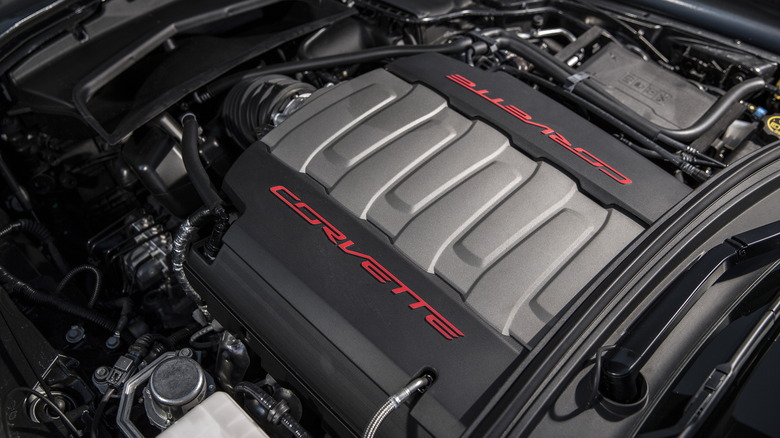LS Engine Swaps Explained (And Why They're So Popular)
Engine swaps open up a lot of possibilities for project car builders. One of the most common engine swaps to see is the LS swap, with everyone from drift car builders to drag racers opting to use GM's trusty V8 engine. This is no coincidence, as the LS engine has proved to be an exceptionally good candidate for all kinds of swaps, with several key attributes that make it stand out from others. We've already covered the things you'll need to know before LS swapping your car, so here we'll be breaking down exactly what it is that makes the LS a wrencher's favorite.
The LS engine holds a special place in the hearts of many enthusiasts and is most famously found under the hood of multiple generations of the Chevrolet Corvette. However, it's no longer found in today's Corvettes, which instead house an LT engine. The current generation LT — not to be confused with the older GM V8 of the same name — is a successor to the LS that may one day eclipse it as the GM engine swap of choice. However, it's also possible that LS blocks might continue to reign supreme even as LT engines get easier and cheaper to source.
The history of the LS engine
The LS engine made its 1997 production debut in the C5 Chevy Corvette. It was the latest iteration of a long line of engines that could trace its roots all the way back to the original Chevy small block V8. That engine had become ubiquitous over the decades, seeing service in GM products ranging from pickups to performance cars. The new engine needed to be just as versatile while also offering improved emissions and power output to keep both regulators and customers happy.
In the following years, the LS appeared in just as diverse an array of vehicles as its predecessor, with variants available in a range of displacements. It continued to serve as GM's primary performance engine until 2014, when its successor, the LT1, debuted in the C7 Corvette. Over the following years, production of the LS wound down until the final iterations were retired in 2017.
LS engines are a tried and tested V8 design
While the LS engine did see a significant number of components redesigned from its predecessors, the basic blueprint of the engine remained the same. The LS is a pushrod V8, an old-school design with some limitations compared to overhead-cam engines. The main limitation is a lower redline, as pushrod engines are more susceptible to valve float at higher RPMs. However, the benefits in the case of the LS V8 definitely outweigh the downsides. Crucially, pushrod V8 engines feature a simpler design than OHC counterparts, making them easier to work on and reducing the number of elements that can fail.
They also feature an integrated camshaft, which reduces the engine's overall dimensions and helps it fit in tighter engine bays. This is a particularly useful attribute for the LS, but we'll get to that later. A smaller, simpler design also helps keep production costs down, which in turn means that buyers pay less for the engine.
LS engines are highly durable
We've previously ranked several engines in the LS family among the most reliable GM engines ever made, and with good reason. Across the board, LS engines have proved to be thoroughly dependable in stock form, and their sturdy construction also means that they're capable of handling significant power upgrades with only minimal modifications. This, in turn, allows builders on a tighter budget more freedom to increase power output without breaking the bank.
While almost any LS engine makes a reliable starting point for upgrading, it's worth noting that there are some small differences that make certain variants more attractive to builders aiming for exceptionally high power outputs. The original Gen III LS design, which debuted in 1997, is known to be particularly reliable, while the Gen IV design introduced in 2005 brought new systems that added extra failure points. Among other things, the Gen IV featured additions like variable valve timing and new fuel management systems. Nonetheless, newer engines remain a very safe bet when it comes to durability.
LS engines offer plenty of options
While all LS engines tend to be more compact than their rivals, larger LS variants will be potentially more difficult to fit in a smaller car's engine bay. Luckily, the range of sizes and displacements of LS engines that GM offered over the years means that builders have lots of options.
On one end of the spectrum, the 5.3L LS4 is among the smallest of the family, primarily appearing in GM's front-wheel drive cars during the mid-'00s. In stock form, it produces 303 horsepower, which is more than enough for smaller, lighter cars with tighter engine bays. At the other end of the scale, the 7.0L (427 cubic inch) LS7 offers over 500 horsepower from the factory but will require a much more generously sized engine bay.
Cost is another factor for builders to consider. Even if your car can fit a larger, more powerful engine, sometimes it's better to opt for a cheaper, more readily available engine. Again, the wide range of LS variants on offer means that builders get the freedom of choice to pick one that suits their build and budget.
LS engines can produce huge power outputs
Most project car owners don't want or need an engine that can make over 1,000 horsepower. However, having an engine with the potential for hugely increased power outputs is never a bad thing. The LS is one of the easiest engines of all to modify into a high-horsepower beast, thanks to the large aftermarket and its straightforward design. The array of off-the-shelf upgrades available from racing-oriented tuning brands also helps cut down on the amount of custom parts a builder needs to fabricate.
The most thoroughly overhauled LS engines can produce 3,000 horsepower or more and can be found powering some of the world's best drag cars. With custom blocks, billet components, and beefy turbochargers, they're the pinnacle of what LS engine builders can achieve. For every other LS-powered project car owner, they serve as a reminder that their car's power output is only really limited by their tinkering expertise and their budget.
LS engines are very versatile
For all the reasons above, LS engines have found their way into a huge variety of car makes and models over the decades. For many of the most popular models, all the essential parts a wrencher needs for an LS swap can be bought straight from aftermarket specialists. That makes them more versatile than many enthusiasts would think -– while older American cars like muscle classics or pickups make obvious candidates for LS swaps, conversion kits can also be bought for everything from a Lexus IS 250 to a Land Rover Defender.
The LS-based Vortec engine is also an option for builders looking for a tougher engine, especially for SUV or truck use. Vortec engines share much of their design with the LS engine but feature blocks made of iron rather than aluminum, which makes them even more durable. Yet, they can still handle large increases in power without denting their reliability.
The LS family's versatility stretches from aforementioned truck use right through to use in supercars. In fact, there is a long history of low-volume European supercars using LS engines, like the Vencer Sarther. They're popular for all the same reasons why project car builders love them: being an affordable way for smaller manufacturers to develop powerful engines for their cars.
LS swaps can be performed by relative wrenching novices
The long-standing popularity of LS engines means that there's a huge amount of information available online about different types of swaps and builds. Combine that with the large amount of off-the-shelf aftermarket parts that can be bought, and the result is one of the best engines for less experienced wrenchers to work on. Depending on the variant, LS engines can also be easily found in junkyards for affordable prices, making them accessible to first-time project car owners who don't have the cash for a high-end crate motor.
Enthusiast forums are filled with threads detailing the finer points of swapping an LS engine into all manner of cars and can provide invaluable advice for first-timers looking to know what potential pain points might come up during the build process. These forums can also be helpful for establishing cost estimates and deciding which performance upgrades are most worthwhile for any particular type of build.
Why aren't LT swaps more popular?
While LS swaps are still the most common GM V8 swap, they've now been out of mass production for several years. That begs the question, why doesn't everyone use the LS' successor, the Gen V LT? It's the most advanced GM V8 to date and boasts even more impressive stock power output. However, it's also considerably more expensive to buy and lacks the huge aftermarket that the LS boasts.
It's this combination of cost and limited aftermarket support that has kept the LT from taking the LS' crown at the top of the engine swap popularity list for now. However, it might not be that way forever. LS engines are currently easy to find in both new and used forms, while LT engines are generally tougher to find for cheap.
Fast forward a decade or two from now though, and those roles might be reversed. Aftermarket support for the LT should also have further increased by then, although whether the LT will ever reach the point where its popularity overtakes the LS remains to be seen.
